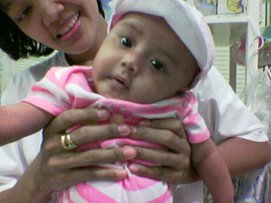
ON November 5th 2007 the President of Republic of Indonesia has launched the People’s Entrepreneurship Credit (Kredit Usaha Rakyat, KUR). This program, under responsibility from the Ministry of Cooperatives and Small and Micro Enterprises, existed in order to facilitate poor people to get access to the financial services. This program hoped to reach the poor people to get capital to start their own micro enterprises. Until the end of 2007, realization of KUR is 485 billion rupiahs (about 9200 rupiah is similar with 1 dollar USA). The last data I got from Coordinating Team for Poverty Alleviation, Ministry for Coordinating People Welfare mention that on March 31st 2008 the number hit the amount 3 trillion rupiahs (Rp 3.276 trillion) and the customer close to 187.860 people.
I have some idea to read the implementation of KUR. Better that we see the ‘location’ of the realization of KUR –not just ‘how much’ the money to be dropped. To implement the mottos ‘employment, income, and growth’ KUR must be replicable for poor people in rural, and working in agriculture. How if the name of the program not jus KUR but KURP or more provocative we can use the abbreviation of “KURaP DiiSeP” (Kredit Usaha Rakyat Perdesaan di Sektor Pertanian: Urban People’s Entrepreneurship Credit in Agricultural Sector). Ridiculous of bank KUR just services to the urban people like in Jakarta –because it is a kind of trade off program with the Official Jakarta’s project to decrease the number of informal micro entrepreneur.
Marguerite Robinson ever wrote about the learn lesson of BRI in Indonesia. The reform of BRI's microbanking system was undertaken in order to bring about a major increase in the availability of financial services-initially a profitable financial for the rural population and later for low-income urban residents as well. BRI is state owned bank.
KUR should become a special services that are widely available in rural areas and in low-income urban neighborhoods help the poor improve their financial security, allow them to take longstanding advantage of business opportunities, and facilitate the growth of their enterprises.
In Indonesia sustainable microfinance in the formal sector began in 1970 with interest in the the opening of Bank Dagang Bali (BDB), a private bank in Bali, and attained nationwide coverage with the 1984 restructuring of the unit desa, or local banking -emerging, system of the state-owned Bank Rakyat Indonesia (BRI).
According to empower the rural poor people who work in agricultuture, in the 1970s BRI opened more than 3,500 village units to channel subsidized government credit to rice farmers through BIMAS. It is a tremendous program under supervising by almarhum Soeharto. Bimas or “Bimbingan Massal” is the credit component of Indonesia's massive rice intensification program. As it turned out, the rice intensification program was highly successful, but its credit component was not. The long-term results of BIMAS were similar to those found in many developing countries. The subsidized loans, being at below-market interest rates and so in demand by wealthier farmers, often did not reach poor farmers. Moreover, arrears and losses were high. The program was phased out in 1985.
The Bimas program has passed away but we have to learn about. KUR must be focused to rural poor people who live and work in agriculture. Not just how much money to be dropped. Go to our beloved village, back to rural. focused on agriculture…
Jul 27, 2008
KUR or KURaP
di
10:04 PM
![]()
Subscribe to:
Post Comments (Atom)






No comments:
Post a Comment